-
 Bitcoin
Bitcoin $99,594.2189
-3.59% -
 Ethereum
Ethereum $2,188.5793
-9.00% -
 Tether USDt
Tether USDt $1.0001
-0.02% -
 XRP
XRP $1.9745
-5.82% -
 BNB
BNB $608.9511
-3.73% -
 Solana
Solana $130.4575
-5.93% -
 USDC
USDC $1.0000
0.01% -
 TRON
TRON $0.2637
-3.59% -
 Dogecoin
Dogecoin $0.1493
-5.97% -
 Cardano
Cardano $0.5322
-6.72% -
 Hyperliquid
Hyperliquid $33.9044
3.33% -
 Bitcoin Cash
Bitcoin Cash $449.6411
-5.46% -
 UNUS SED LEO
UNUS SED LEO $8.9629
0.43% -
 Sui
Sui $2.3943
-8.35% -
 Chainlink
Chainlink $11.4402
-7.83% -
 Stellar
Stellar $0.2241
-6.49% -
 Avalanche
Avalanche $16.1489
-4.24% -
 Toncoin
Toncoin $2.7182
-5.94% -
 Shiba Inu
Shiba Inu $0.0...01040
-5.72% -
 Litecoin
Litecoin $78.7882
-4.07% -
 Ethena USDe
Ethena USDe $1.0004
-0.01% -
 Hedera
Hedera $0.1305
-7.45% -
 Monero
Monero $297.0030
-5.32% -
 Dai
Dai $0.9997
-0.02% -
 Polkadot
Polkadot $3.1834
-6.03% -
 Bitget Token
Bitget Token $3.9788
-7.03% -
 Uniswap
Uniswap $6.1327
-10.62% -
 Pepe
Pepe $0.0...08689
-8.30% -
 Pi
Pi $0.4826
-9.65% -
 Aave
Aave $219.8043
-9.69%
How to use KDJ on the time-sharing chart? What should be paid attention to in short-term operations?
Use KDJ on time-sharing charts for short-term crypto trades; K line crossing D from below 20 signals entry, above 80 suggests exit. Combine with RSI for robust signals.
May 24, 2025 at 11:14 am
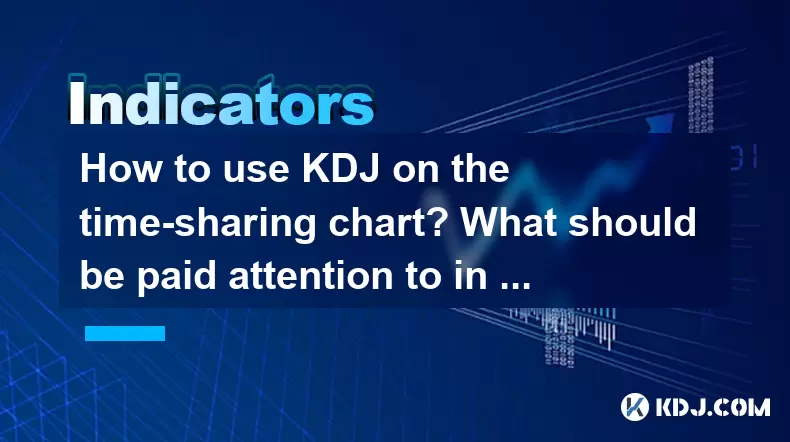
Introduction to KDJ Indicator
The KDJ indicator is a popular technical analysis tool used in the cryptocurrency market to gauge momentum and potential reversal points. It is particularly useful for traders who focus on short-term operations and time-sharing charts. The KDJ indicator consists of three lines: K, D, and J. The K and D lines are calculated based on the highest high and lowest low of a specified period, while the J line is a more sensitive indicator that oscillates around the K and D lines. Understanding how to effectively use the KDJ on time-sharing charts can significantly enhance your trading strategies.
Setting Up KDJ on Time-Sharing Charts
To begin using the KDJ indicator on a time-sharing chart, you will need to follow these steps:
- Select your trading platform: Ensure that your chosen cryptocurrency trading platform supports the KDJ indicator and time-sharing charts. Popular platforms like Binance, Coinbase, and TradingView typically offer these features.
- Access the chart settings: Navigate to the chart settings or indicators menu. This is usually found by clicking on the chart and selecting "Indicators" or a similar option.
- Add the KDJ indicator: Search for "KDJ" in the indicator list and add it to your chart. You may need to customize the settings, such as the period length, to suit your trading style.
- Adjust the time frame: Set the chart to display a time-sharing view, which typically shows price movements in smaller intervals like minutes or seconds.
Interpreting KDJ Signals on Time-Sharing Charts
Once the KDJ indicator is set up on your time-sharing chart, you need to understand how to interpret its signals. The KDJ lines provide insights into overbought and oversold conditions, which are crucial for short-term trading:
- Overbought and Oversold Levels: The KDJ indicator typically uses levels of 80 and 20 to indicate overbought and oversold conditions, respectively. When the K line crosses above 80, it suggests that the asset may be overbought, and a price correction could be imminent. Conversely, when the K line crosses below 20, it indicates an oversold condition, suggesting a potential price rebound.
- Golden Cross and Death Cross: A golden cross occurs when the K line crosses above the D line, signaling a potential bullish trend. Conversely, a death cross happens when the K line crosses below the D line, indicating a potential bearish trend. These crossovers are particularly useful for identifying entry and exit points on time-sharing charts.
- J Line Divergence: The J line is more sensitive and can provide early signals of trend reversals. If the J line diverges from the price action (i.e., the price continues to rise while the J line falls, or vice versa), it may indicate a weakening trend and a potential reversal.
Applying KDJ for Short-Term Operations
Using the KDJ indicator for short-term operations requires a keen eye for detail and a disciplined approach. Here are some strategies to consider:
- Quick Entry and Exit: Given the fast-paced nature of time-sharing charts, use the KDJ indicator to identify quick entry and exit points. For example, if the K line crosses above the D line from below 20, it may be a good entry point for a short-term bullish trade. Similarly, if the K line crosses below the D line from above 80, consider exiting a long position or entering a short position.
- Confirmation with Other Indicators: While the KDJ can be powerful on its own, combining it with other indicators like the RSI or MACD can provide more robust signals. For instance, if the KDJ indicates an overbought condition and the RSI also shows overbought levels, the signal is more reliable.
- Volume Analysis: Pay attention to trading volume alongside KDJ signals. A high volume during a KDJ golden cross can confirm the strength of the bullish trend, while low volume during a death cross may suggest a weak bearish trend.
Key Considerations for Short-Term Operations
When engaging in short-term operations using the KDJ indicator on time-sharing charts, several factors need to be considered to maximize your trading success:
- Volatility and Risk Management: Short-term trading, especially on time-sharing charts, can be highly volatile. Implement strict risk management rules, such as setting stop-loss orders and only risking a small percentage of your trading capital on each trade.
- Market Conditions: The effectiveness of the KDJ indicator can vary depending on market conditions. During strong trends, the KDJ may generate false signals, so it's crucial to understand the broader market context before making trading decisions.
- Time Frame Sensitivity: The KDJ settings need to be adjusted based on the time frame you are trading. Shorter time frames may require more sensitive settings, while longer time frames might benefit from less sensitive settings to filter out noise.
Practical Example of KDJ on Time-Sharing Chart
To illustrate how the KDJ indicator works on a time-sharing chart, let's consider a practical example:
- Scenario: You are trading Bitcoin on a 5-minute time-sharing chart. The KDJ indicator is set with default parameters (9, 3, 3).
- Observation: You notice that the K line crosses above the D line from below 20, indicating a potential bullish trend. The J line also shows a positive divergence from the recent price action.
- Action: Based on these signals, you decide to enter a long position on Bitcoin. You set a stop-loss order just below the recent low to manage risk.
- Outcome: The price of Bitcoin rises as expected, and you exit the position when the K line crosses above 80, signaling an overbought condition.
Frequently Asked Questions
Q1: Can the KDJ indicator be used effectively on all cryptocurrencies?
A1: While the KDJ indicator can be applied to any cryptocurrency, its effectiveness may vary depending on the liquidity and volatility of the specific asset. Highly liquid cryptocurrencies like Bitcoin and Ethereum tend to provide more reliable signals, whereas less liquid assets may produce more false signals.
Q2: How often should I adjust the KDJ settings for short-term trading?
A2: The frequency of adjusting KDJ settings depends on your trading strategy and the market conditions. For short-term trading on time-sharing charts, you might need to adjust the settings more frequently to adapt to rapid price movements. However, frequent adjustments can lead to over-optimization, so it's important to find a balance.
Q3: Is the KDJ indicator more effective on shorter or longer time frames?
A3: The KDJ indicator can be effective on both shorter and longer time frames, but its sensitivity needs to be adjusted accordingly. On shorter time frames, like time-sharing charts, more sensitive settings are typically used to capture quick price movements. On longer time frames, less sensitive settings help filter out noise and focus on more significant trends.
Q4: How can I combine the KDJ indicator with other technical analysis tools?
A4: Combining the KDJ indicator with other tools like the RSI, MACD, or moving averages can enhance your trading strategy. For instance, using the RSI to confirm overbought or oversold conditions signaled by the KDJ can increase the reliability of your trades. Similarly, using moving averages to identify the overall trend can help you align your KDJ signals with the broader market direction.
Disclaimer:info@kdj.com
The information provided is not trading advice. kdj.com does not assume any responsibility for any investments made based on the information provided in this article. Cryptocurrencies are highly volatile and it is highly recommended that you invest with caution after thorough research!
If you believe that the content used on this website infringes your copyright, please contact us immediately (info@kdj.com) and we will delete it promptly.
- Altcoins Under Pressure: Cardano and XRP Face Critical Tests
- 2025-06-23 12:25:12
- Rare Coin Fever in Wiltshire: Auctions, Errors, and Olympic Gold!
- 2025-06-23 12:25:12
- XRP Price Under Pressure: War Fears and Market Sentiment
- 2025-06-23 12:30:12
- HAI Token Private Key Leak: What Happened and How to Stay Safe
- 2025-06-23 12:45:12
- Texas Goes All In: Bitcoin Reserve Signals Big State Embrace
- 2025-06-23 12:45:12
- Pi Network's Price Plunge: Crash, Scammer Accusations, and What's Next?
- 2025-06-23 13:05:12
Related knowledge
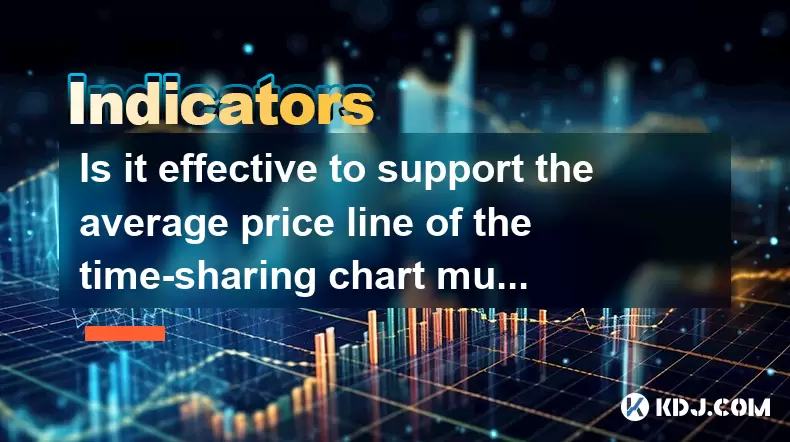
Is it effective to support the average price line of the time-sharing chart multiple times?
Jun 23,2025 at 01:36pm
Understanding the Average Price Line in Time-Sharing ChartsIn cryptocurrency trading, time-sharing charts refer to real-time price charts that display price movements over short intervals, often within a single trading day. Within these charts, the average price line, also known as the Volume Weighted Average Price (VWAP), is a commonly used technical i...
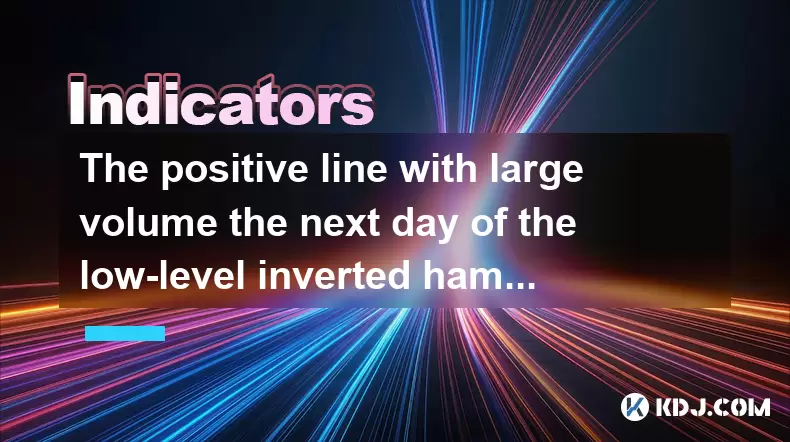
The positive line with large volume the next day of the low-level inverted hammer line confirms the reversal?
Jun 23,2025 at 01:21pm
Understanding the Low-Level Inverted Hammer LineThe inverted hammer line is a single candlestick pattern that typically appears at the end of a downtrend. It has a small real body near the bottom of the trading range and a long upper shadow, indicating that bulls attempted to push prices higher but were met with selling pressure. When this pattern forms...
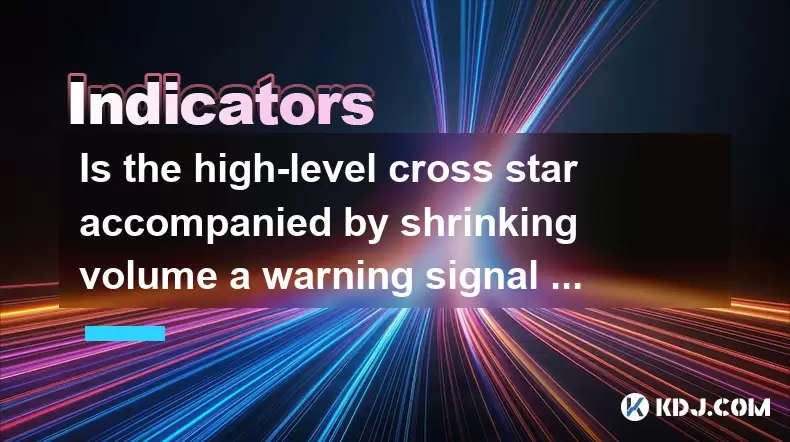
Is the high-level cross star accompanied by shrinking volume a warning signal of peaking?
Jun 23,2025 at 01:28pm
Understanding High-Level Cross Star PatternsIn the world of cryptocurrency trading, candlestick patterns are essential tools for technical analysis. One such pattern is the high-level cross star, which appears as a doji or near-doji candle at a significant resistance level. This pattern often indicates indecision in the market and can be interpreted as ...
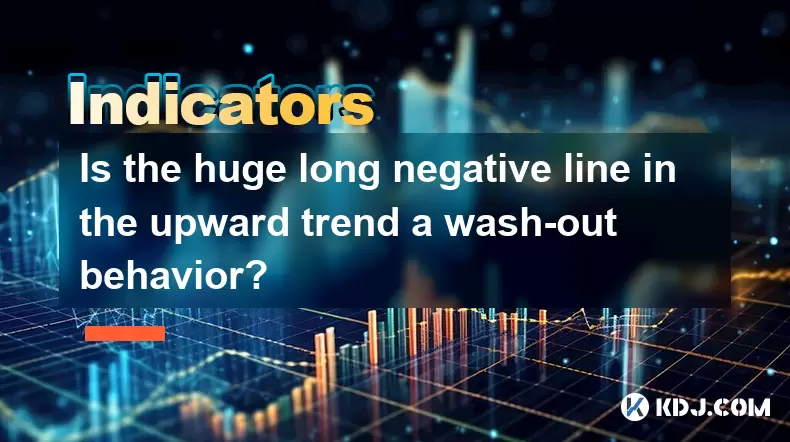
Is the huge long negative line in the upward trend a wash-out behavior?
Jun 23,2025 at 12:49pm
Understanding the Long Negative Candlestick in an Uprising TrendA long negative candlestick, often referred to as a long red or bearish candle, appearing during an upward trend can raise concerns among traders and investors. This pattern typically indicates a sudden and significant drop in price after a period of rising prices. It is often interpreted a...

Can the EXPMA golden cross stand on the 5-day line at the same time?
Jun 23,2025 at 11:42am
Understanding the EXPMA Indicator in Cryptocurrency TradingThe Exponential Moving Average (EXPMA) is a popular technical analysis tool used by cryptocurrency traders to identify trends and potential reversal points. Unlike simple moving averages, the EXPMA gives more weight to recent price data, making it more responsive to current market conditions. In...

Does the second surge in the RSI overbought zone induce more?
Jun 22,2025 at 08:35am
Understanding the RSI Overbought ZoneThe Relative Strength Index (RSI) is a momentum oscillator commonly used in technical analysis to measure the speed and change of price movements. It ranges from 0 to 100, with values above 70 typically considered overbought and values below 30 considered oversold. When the RSI enters the overbought zone for the firs...

Is it effective to support the average price line of the time-sharing chart multiple times?
Jun 23,2025 at 01:36pm
Understanding the Average Price Line in Time-Sharing ChartsIn cryptocurrency trading, time-sharing charts refer to real-time price charts that display price movements over short intervals, often within a single trading day. Within these charts, the average price line, also known as the Volume Weighted Average Price (VWAP), is a commonly used technical i...

The positive line with large volume the next day of the low-level inverted hammer line confirms the reversal?
Jun 23,2025 at 01:21pm
Understanding the Low-Level Inverted Hammer LineThe inverted hammer line is a single candlestick pattern that typically appears at the end of a downtrend. It has a small real body near the bottom of the trading range and a long upper shadow, indicating that bulls attempted to push prices higher but were met with selling pressure. When this pattern forms...

Is the high-level cross star accompanied by shrinking volume a warning signal of peaking?
Jun 23,2025 at 01:28pm
Understanding High-Level Cross Star PatternsIn the world of cryptocurrency trading, candlestick patterns are essential tools for technical analysis. One such pattern is the high-level cross star, which appears as a doji or near-doji candle at a significant resistance level. This pattern often indicates indecision in the market and can be interpreted as ...

Is the huge long negative line in the upward trend a wash-out behavior?
Jun 23,2025 at 12:49pm
Understanding the Long Negative Candlestick in an Uprising TrendA long negative candlestick, often referred to as a long red or bearish candle, appearing during an upward trend can raise concerns among traders and investors. This pattern typically indicates a sudden and significant drop in price after a period of rising prices. It is often interpreted a...

Can the EXPMA golden cross stand on the 5-day line at the same time?
Jun 23,2025 at 11:42am
Understanding the EXPMA Indicator in Cryptocurrency TradingThe Exponential Moving Average (EXPMA) is a popular technical analysis tool used by cryptocurrency traders to identify trends and potential reversal points. Unlike simple moving averages, the EXPMA gives more weight to recent price data, making it more responsive to current market conditions. In...

Does the second surge in the RSI overbought zone induce more?
Jun 22,2025 at 08:35am
Understanding the RSI Overbought ZoneThe Relative Strength Index (RSI) is a momentum oscillator commonly used in technical analysis to measure the speed and change of price movements. It ranges from 0 to 100, with values above 70 typically considered overbought and values below 30 considered oversold. When the RSI enters the overbought zone for the firs...
See all articles

























































































